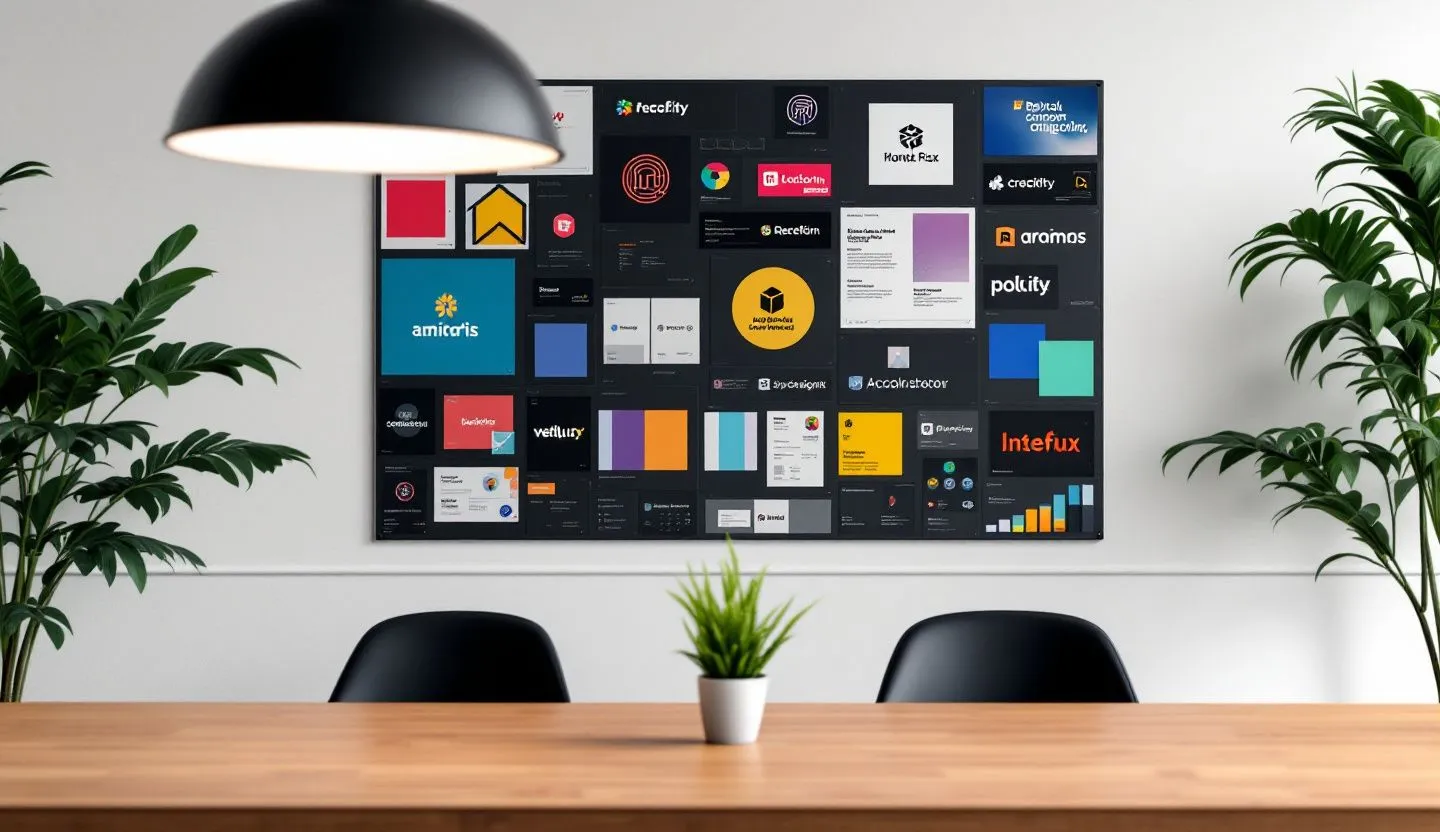Every enterprise marketer I know wakes up thinking about speed. Maybe you feel it too,the constant pressure to deliver more content, to more channels, in less time, with zero slip-ups on brand or compliance. We’re tasked with orchestrating global teams, aligning creative and compliance, and somehow still keeping the brand voice strong and consistent in every asset. And let’s be real: the old way of doing things,endless Slack threads, scattered Google Docs, and that one folder everyone swears is the “single source of truth”,just doesn’t cut it anymore.
The world shifted. Content is now the connective tissue between your brand and every audience, partner, and region. The stakes are high, and so are expectations. But here’s the real pain: as the speed of business increases, so does the complexity. Suddenly, every asset is a compliance risk, every campaign is a coordination puzzle, and every new region or channel you enter multiplies the challenges. It’s no longer just about getting content out the door. It’s about governing the entire content lifecycle,strategy, creation, review, approval, distribution, performance, and even sunsetting,with one eye on brand, one on risk, and both hands on the wheel.
If you’re reading this, you’re probably wrestling with questions like: What is content lifecycle management, really? How do I keep our brand consistent across 25 global markets? How do I make legal happy without slowing creative to a crawl? How do I scale our content engine when every team, from marketing ops to compliance, is already maxed out? These are the real tensions of modern enterprise marketing, and they’re exactly why content lifecycle management solutions have become the backbone of high-performing brands in 2025.
Why content lifecycle management is business-critical now
The explosion of channels, assets, and regulatory expectations over the past few years has forced us to rethink what “content management” really means. It’s no longer just digital asset management or a glorified shared drive. Content lifecycle management is about orchestrating every phase of your content’s journey, from brief to archive, across teams, markets, and compliance gates. When we ask, “What is content lifecycle management?” we’re really talking about a strategic framework that connects people, processes, and technology to ensure content is not just created, but also governed, optimized, and retired efficiently.
Take a global consumer brand as an example. Their content calendar isn’t just a list of blog posts and social updates,it’s a living ecosystem, with creative teams in New York, legal in London, and brand guardians in Singapore all collaborating on the same campaigns. Without a single, secure system to manage the lifecycle of every asset, things fall through the cracks. Duplicate work balloons, compliance bottlenecks creep in, and the brand starts to fracture. We’ve all seen the “rogue” regional campaign that nearly slipped through unreviewed, or the outdated asset that reappeared in a new market and caused a compliance fire drill.
This isn’t just a pain for marketing. IT, legal, and operations teams are on the hook too. Security breaches, versioning errors, or failure to sunset expired content can create real risk, both reputational and regulatory. That’s why the best content lifecycle management solutions now offer more than just storage,they deliver audit trails, permissioning, integration with existing tech stacks, and true end-to-end control.
The new rules of brand consistency, speed, and compliance
What’s changed in the past year? For one, the line between content creation and content governance has blurred. The days when marketers could “move fast and break things” are over. Now, speed-to-market must coexist with rigorous compliance and brand control.
We’re also seeing a push toward platform consolidation. Enterprise leaders want fewer, smarter systems that play nicely together,think integrations with CRM, DAM, project management, and analytics tools. The best solutions don’t just store assets; they orchestrate workflows, automate approvals, and give visibility to every stakeholder from creative to compliance. It’s not about adding more tools,it’s about connecting the right ones.
And let’s not forget scale. As content demand skyrockets, the ability to templatize, localize, and repurpose assets without sacrificing quality or brand integrity has become a top priority. This is where content lifecycle management shines, allowing marketing and brand teams to move faster, with fewer errors, and a whole lot less stress.
What to look for in a content lifecycle management solution
Before diving into the top solutions, it’s worth reflecting on what actually matters for enterprise teams. In my experience, the right platform will:
- Orchestrate the full content lifecycle: From ideation and creation to review, approval, distribution, measurement, and retirement.
- Enable brand consistency at scale: With templates, brand guidelines, and role-based permissions.
- Integrate seamlessly with your existing stack: Including DAM, CRM, project management, compliance, and analytics tools.
- Offer granular governance and security: Think audit trails, version control, and compliance workflows.
- Empower collaboration across teams and geographies: With real-time editing, commenting, and localization support.
If you’re evaluating solutions in 2025, these are the non-negotiables. Now, let’s explore the top platforms that are setting the standard for modern content lifecycle management.
1. Desygner Enterprise: The all-in-one brand governance engine
Desygner Enterprise has rapidly become the go-to solution for global brands looking to tame the chaos of content at scale. If you’ve ever found yourself chasing the latest version of a product brochure across email chains, or losing sleep over whether regional teams are using the right logos, Desygner’s platform will feel like a breath of fresh air.
Brand control and templating made simple
Desygner’s strength is its ability to lock down brand elements without stifling creativity. Centralized templates, brand kits, and asset libraries make it nearly impossible for teams to go off-script, while still giving local marketers the freedom to adapt content for their audiences. Imagine rolling out a new product campaign across 40 countries, with every region able to localize language and imagery,without ever breaking brand guidelines. That’s the power of true brand governance.
End-to-end workflow orchestration
But Desygner goes beyond templating. Its built-in workflow engine covers every phase of the content lifecycle: brief, create, review, approve, distribute, and archive. Legal and compliance can review assets in-platform, leaving comments and tracking approvals, all with a complete audit trail for peace of mind. Integration with DAM, CRM, and analytics platforms means assets flow seamlessly between teams, and nothing gets lost in the shuffle.
Desygner also stands out for its robust security, with granular user permissions, watermarking, and SOC 2 compliance,crucial for regulated industries like finance, healthcare, and government. The result: less time chasing down approvals, more time delivering high-impact content.
2. Adobe Experience Manager: Enterprise-grade content orchestration
Adobe Experience Manager (AEM) is a heavyweight in the content lifecycle management arena, and for good reason. If you’re running a complex, multi-channel content operation and need deep integration with creative workflows, AEM is often the first name on the shortlist.
Seamless integration with creative and marketing tools
AEM’s biggest selling point is its tight integration with Adobe Creative Cloud and Marketing Cloud. For creative directors and brand teams already working in Photoshop, InDesign, or Illustrator, AEM acts as the connective tissue, allowing assets to flow directly from creation to publication, with automated versioning and approval workflows layered in. No more exporting files, uploading to shared drives, or wrangling disparate review tools,everything lives in one ecosystem.
Advanced governance and personalization
But AEM isn’t just for creative teams. Its governance features are robust, supporting granular permissions, audit logs, and workflow automation that keeps legal, risk, and IT teams happy. AEM also excels at personalization, leveraging AI to deliver dynamic content tailored to different audiences and channels. This means your content isn’t just on-brand and compliant,it’s also more effective at driving engagement and conversions.
For enterprises managing high volumes of digital assets and global campaigns, AEM delivers the scale and control needed to keep pace with modern content demands.
3. Aprimo: Purpose-built for compliance-driven industries
If your world revolves around regulatory requirements, audit trails, and risk management, Aprimo is a platform you’ll want to have on your radar. It’s trusted by leaders in financial services, healthcare, and other highly regulated sectors where content missteps can have real consequences.
Compliance and audit at the core
Aprimo’s platform is built with governance in mind. Every asset, workflow, and approval is tracked, timestamped, and easily auditable. This is invaluable for compliance officers and legal teams who need to demonstrate control over content processes,whether for internal audits or external regulators.
But Aprimo doesn’t sacrifice usability for control. Marketing teams can still move quickly, thanks to intuitive workflows, dynamic templating, and integrations with creative and distribution tools. The platform’s AI-driven tagging and metadata features make it easy to organize, find, and repurpose assets, reducing the risk of outdated or non-compliant content slipping through the cracks.
Cross-team collaboration and localization
Aprimo also excels at supporting cross-functional teams. Local markets can access approved assets, customize content within pre-set guardrails, and route changes for review,no more rogue edits or unsanctioned campaigns. For global brands juggling dozens of markets and languages, Aprimo’s localization workflows save time and reduce risk.
For CIOs and IT leaders, Aprimo’s enterprise-grade security, robust APIs, and cloud-native architecture make integration and scalability a breeze. It’s a platform that brings peace of mind to both marketers and risk teams.
The next-gen DAM for enterprise
Get more than just storage. Get the DAM that dramatically improves content velocity and brand compliance.4. Brandfolder: The DAM that thinks like a marketer
Brandfolder has carved out a niche as the digital asset management (DAM) platform that truly understands the needs of modern marketing teams. If your pain is less about compliance and more about speed, discoverability, and brand consistency across partners and channels, Brandfolder is worth a close look.
Intuitive asset organization and sharing
Brandfolder’s interface is clean, visual, and designed for non-technical users. Assets are easy to tag, search, and preview, making it a favorite among creative and partner teams who need fast access to the right files. The platform’s “collections” feature lets you group assets by campaign, product line, or region, while granular permissions ensure only the right people can edit or download sensitive content.
What sets Brandfolder apart is its focus on external sharing. If you’re managing a network of agencies, resellers, or franchise partners, Brandfolder makes it simple to distribute up-to-date assets, track usage, and even revoke access when needed. No more outdated logos popping up in the wild.
Workflow automation and analytics
Brandfolder isn’t just about storage. Its workflow automation tools let you route assets for review, approval, and publishing, with real-time notifications to keep projects moving. Built-in analytics show which assets are being used, by whom, and where, giving marketing ops teams the data needed to optimize content investments.
For enterprise IT and security teams, Brandfolder’s robust integrations, single sign-on (SSO), and detailed audit trails tick all the boxes. It’s a DAM platform that speaks the language of both marketers and risk managers.
5. Bynder: The creative operations powerhouse
Bynder has become a favorite for creative operations leaders who need to orchestrate high volumes of content, across global teams, without losing sight of brand or quality. If your team is under pressure to deliver more assets, to more channels, with less headcount, Bynder’s platform is designed to keep you ahead of the curve.
Creative project management meets DAM
Bynder combines robust DAM functionality with creative project management features. This means marketing, creative, and brand teams can collaborate on briefs, assign tasks, track progress, and manage approvals,all within a single platform. No more toggling between project management tools and asset libraries.
The platform’s templating engine allows teams to create on-brand assets at scale, with customizable fields for localization, personalization, or channel optimization. This is a game-changer for global brands who need to maintain consistency while empowering local teams to move fast.
Integration and analytics for the enterprise
Bynder plays nicely with the rest of your martech stack, offering integrations with creative tools, CMS, analytics, and even AI-powered content optimization platforms. Built-in analytics provide visibility into asset usage, campaign performance, and workflow bottlenecks, helping marketing ops leaders optimize processes and prove ROI.
Security, compliance, and scalability are all baked in, with granular permissions, audit trails, and cloud-native infrastructure. Bynder is built for the realities of modern enterprise marketing,where speed and control aren’t mutually exclusive.
Bringing it all together: Real-world outcomes
Having led large-scale brand and marketing teams, I know how transformational the right content lifecycle management solution can be. Take, for instance, a global beverage company I worked with last year. Before implementing a unified platform, they were juggling five different DAMs, three project management tools, and a compliance process that lived entirely in email. Creative teams were frustrated, legal was overwhelmed, and IT was constantly firefighting integration issues.
After consolidating onto a single, enterprise-grade content lifecycle management platform, the transformation was immediate. Approvals that once took days now happened in hours. Brand consistency improved across every market, with local teams empowered to create and adapt content within guardrails. Compliance teams gained visibility and control, reducing risk and audit headaches. And perhaps most importantly, marketing was able to deliver more content, faster, without sacrificing quality or control.
These outcomes aren’t just nice-to-haves,they’re business imperatives. In 2025, the brands winning market share are the ones who can move at the speed of culture while keeping brand, compliance, and operational excellence front and center.
The future of content lifecycle management in 2025
Looking ahead, the role of content lifecycle management will only become more critical. AI is changing the way we create, tag, and optimize content, but it’s also raising new questions about governance, security, and human oversight. The proliferation of channels,from TikTok to emerging AR platforms,means content must be more dynamic and adaptable than ever.
Enterprise leaders need solutions that can flex with these changes. That means platforms that are not only secure and scalable, but also intelligent,able to automate routine tasks, surface insights, and empower teams to focus on high-value work. The next generation of content lifecycle management will blur the lines between creation, governance, and optimization, making it possible to orchestrate content at a speed and scale we’ve never seen before.
If you’re still relying on manual processes, disconnected tools, or legacy systems, now is the time to rethink your approach. The risks,brand dilution, compliance failures, operational inefficiency,are too high. The rewards,faster speed-to-market, stronger brand equity, and a more agile marketing organization,are within reach.
As enterprise marketers, we’re living in an era where the answer to “What is content lifecycle management?” has never been more consequential. The platforms we choose are now the backbone of our brand strategy, operational efficiency, and risk management. The top solutions,Desygner Enterprise, Adobe Experience Manager, Aprimo, Brandfolder, and Bynder,are setting the new standard for what’s possible when content creation, governance, and optimization are unified in a single, secure ecosystem.
The days of content chaos are numbered. By investing in the right content lifecycle management solution, you empower your teams to create, approve, and distribute assets at the pace your business demands,without ever compromising on brand, compliance, or quality. The future belongs to brands who can orchestrate the entire content journey, from first brief to final archive, with clarity, control, and creativity.
No matter your industry, region, or growth ambitions, the question isn’t whether you need a content lifecycle management solution,it’s how soon you can make the shift. The platforms leading the way in 2025 are ready to help you streamline your content strategy, reduce risk, and unlock new levels of performance across your organization. The time to act is now, and the path forward is clearer than ever.




